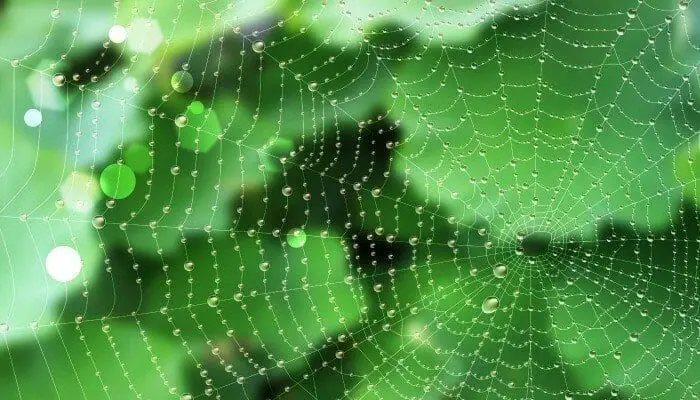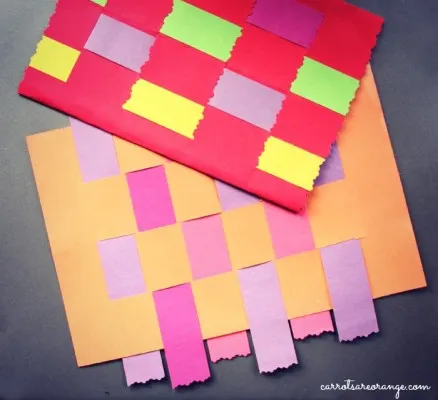I had a blast with this study of spiders & their webs! Okay, my kids may have had a good time, too. There is so much hands-on learning with spiders. The spider makes a fantastic study for preschoolers.
Study of Spiders
I was on a playground supervising outdoor time. The children found a spider web and a spider. Some children ran away screaming while others destroyed the web. There was something sad about the moment.
So, I set out to seek and to create learning activities that would ignite children’s desire to learn more about spiders, to want to co-exist with spiders, to not be afraid of spiders, and to be knowledgeable about spiders (we do have to be safe).

“The spiders are the civil engineers among the small inhabitants of our fields and woods. The build strong suspension bridges, from which they hang nets made with exquisite precision; and they build airplanes and balloons, which are more efficient than any that we have yet constructed…” ~ Anna Botsford Comstock, Handbook of Nature Study
We’ve got loads of spiders around our home. Different types of webs, various spiders, and lots of sacs. Sure enough, my 3 and 5-year-olds began asking lots of questions to which I didn’t have the answer. So, I went on a hunt and pulled together great resources for you.

Spiders and their Webs
Introduce the Spider
You must begin with this beautiful book, Sophie’s Masterpiece: A Spider’s Tale, not only for the story but for the lovely illustrations! The book tells the story of a talented spider. She weaves webs only in the best interest of those people in her life. She weaves with emotion and beauty. She is met with a lot of fear and disapproval until she encounters a young mother. This story will warm your heart. The artwork is inviting to the eye.
Observe
Then take a walk outside, or perhaps around your home or school building. Observe spiders and their webs. Count the spider webs. Notice them. Gently touch the web with a stick so as not to break it but to experience the stickiness and elasticity of the web. Notice the spider. Is it off to the side in a “den”? Is it in the center? How does it act when you approach? Is there a spider sac on the web?
Ask Questions
As my sons began looking more closely at spiders and their webs. I remembered reading a lesson from The Nature Handbook. Comstock is a big proponent of inquiry-based and child-led learning. So, here are a few questions to ask out loud:
- What shape is the web
- Why do you think it’s that shape?
- Do you think silk is all the same?
- Why does a spider have a web?
- When an insect gets caught in the web, what happens? Shall we observe?
- Describe the web. Is it crisscrossed? Is it in a sheet? How are the threads held together?
- Spiders release two types of silk. What is the purpose of each type?
- What do you think a spider does when it is frightened?

Spider Activities for Kids
Weaving: House spiders are the ultimate weavers. Consider trying an activity that involves weaving. You can do a simple paper weave activity, or weave with a baking sheet.
Building: Spiders are civil engineers. Challenge your child to build a bridge using materials such as toothpicks, beans, straws, blocks, and string. Here are a few examples of building activities for kids.
Lacing: Create your own web with this creative spider web lacing activity from Fun at Home with Kids.

Fun Facts about Spiders
- Spiders release two types of silk: one is dry and inelastic (for the framework) while the other is sticky and elastic (for catching food).
- Silk is released in a liquid state. The silk hardens immediately upon contact with air.
- Spiders legs are typically hairy
- During a busy season, a spider may make up to one web every 24 hours
- A spider doesn’t get stuck because it runs on the dry radii and not on the sticky spiral lines
- The “cobweb” is just one kind of web created by the house spider. Other webs include the funnel web (grass spider), the orb web (orb spider), a dome, and the triangle web to name a few variations.
- There are up to 500 or more eggs in a sac but not all survive. Only a few eggs will become full-grown spiders. Eggs and the smallest spiders are food for their brothers.
More Books about Spiders
I like to make it fun at first especially when dealing with a critter that might scare a child or cause a child to hesitate. So, this list below includes sweet, funny stories about spiders, such as Miss Spider’s Tea Party and Diary of a Spider, and non-fictional books like Gail Gibbons’ Spiders filled with loads of wonderful facts about many types of spiders and their webs.
>> More Children’s Books about Spiders
Related Reads
Related Read: 10 Surefire Halloween Montessori Activities
